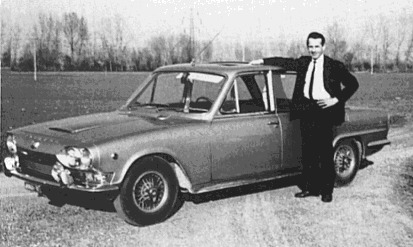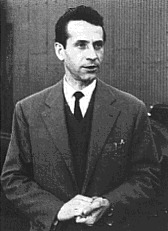
Stag History
The Stag was never designed to meet a carefully researched market need. It started life some time around 1964 as a Triumph 2000 which was Triumphs family saloon.
Stylist Giovanni Michelotti who had strong links with the Triumph company and had already penned the designs for popular Herald and 2000 saloons amongst others. Around 1964, Michelotti asked Triumphs Engineering Director, Harry Webster for a surplus works vehicle to use as the basis for a show car with which to display his talents at the forthcoming Turin Motor Show. Webster and Michelotti where on good terms and a well used 2000 saloon was earmarked for the Italian designer with the proviso that if Triumph liked the design they would get first refusal on it.
So it was that in June 1964 6105KV having finished its duties as support vehicle for the Spitfires racing in the 1964 le Mans 24- hour race was driven to the Michelotti studios in Turin and Michelotti began to work his magic.
Later whilst visiting Michelotti's premises Harry Webster saw the show car that had once been a rather tired 2000 saloon. The drive train and suspension of the 2000 had been retained as had the floor pan, albeit some what shorter than before, but now instead of a four door saloon the body had been transformed into a stylish four seater two door convertible.
Webster was so impressed that he snapped up the design for Triumph and so in mid 1966 the car was delivered to Triumph for evaluation, it never did grace the Michelotti stand at the Turin show.
Triumph bosses where convinced by an enthusiastic Webster on the viability of producing a car that would launch Triumph into the potentially profitable Grand Touring market and open another channel for sales into the USA.
The development of the car from show special to production vehicle was problematic. At first there was a problem with the rigidity of the monocoque shell, despite the use of double skinned body panels the issue was finally solved by the introduction of a rollover bar bracing both "B" pillars with another brace from this to the center of the screen surround giving the car its distinctive T-top. Webster wanted the car to be produced with the option of new Triumph V8 that was also currently under development. The Triumph V8 was being developed as a fuel injected 2.5 litre unit but was still in its early development stages. During this time Triumph merged to become part of British Leyland and interal coporate changes saw Webster's talents being directed to the Austin-Morris divison.
The reigns for the Stag development where taken up by Rovers Spen King, during which time the V8's development saw the enlargement from 2.5 to 3 litres and fuel injection dropped in favour of a more reliable carburetor setup.
Corporate upheavals and development problems led to the first pre production Stag not being ready until Autumn 1969. It would not be until mid 1970 that the Stag would be released to the public, keeping its factory code name of STAG all the way through development to production.
Here is a brief run down, more detail regarding when, where and what changed can be found in "The original Triumph Stag" The restorer's guide by James Taylor.

Michelotti with his Triumph 2000 Saloon

The man himself Giovanni Michelotti

The STAG prototype
The Triumph V8 Engine
The Fast back prototype
Various views of David Redfern's (site creator) 1975 Stag (files are large)